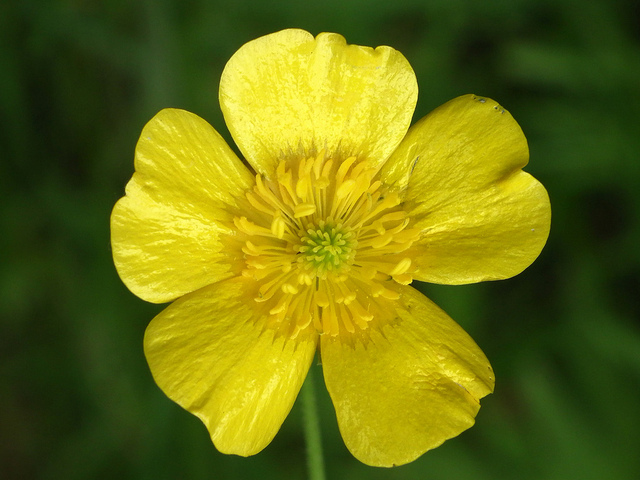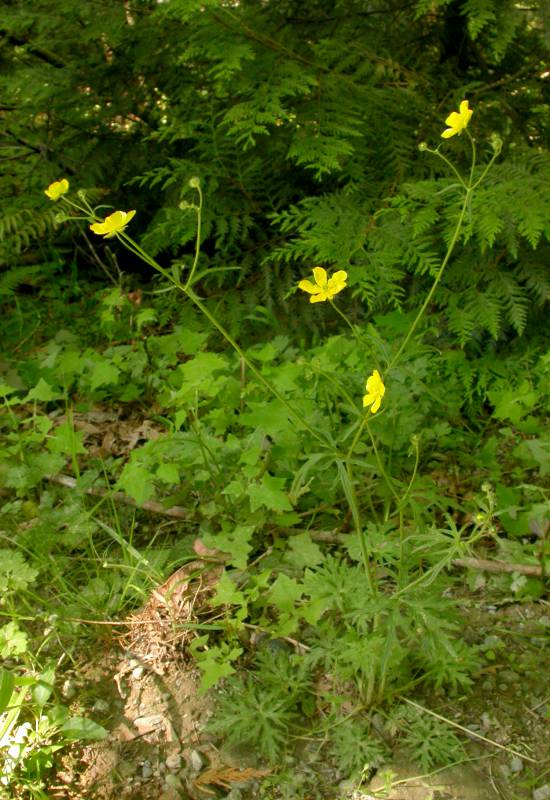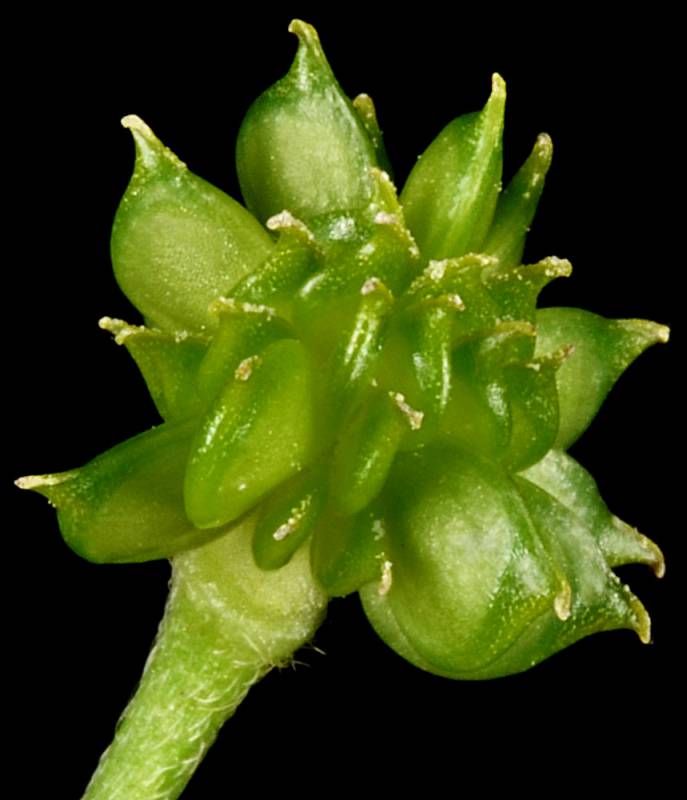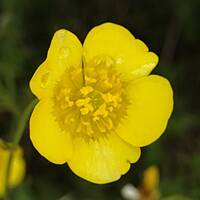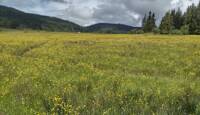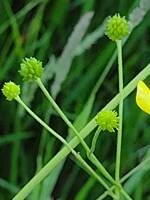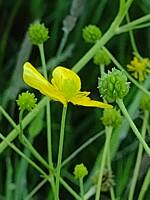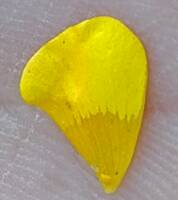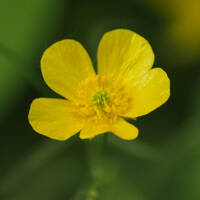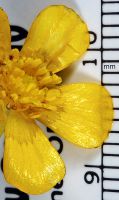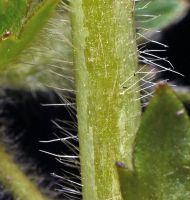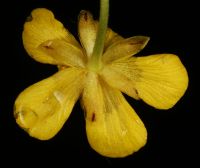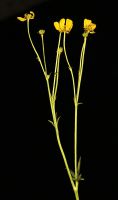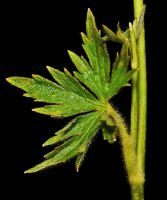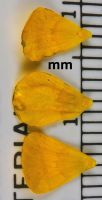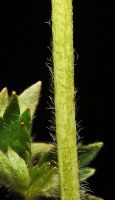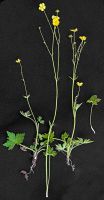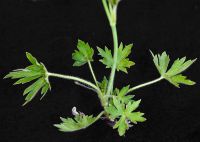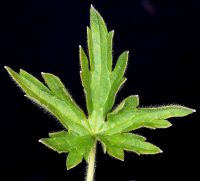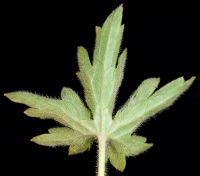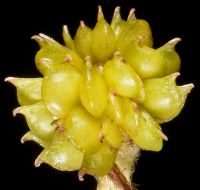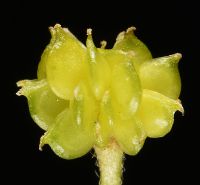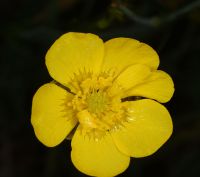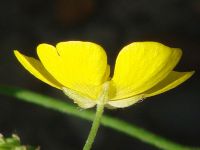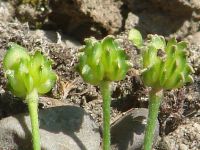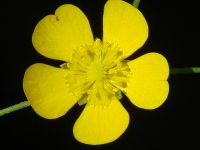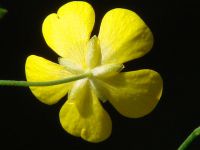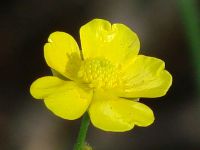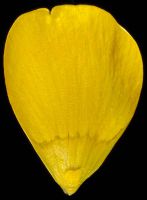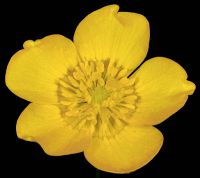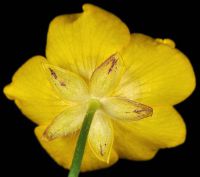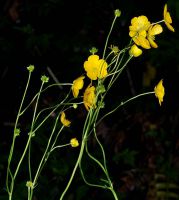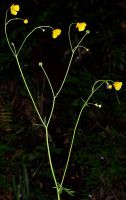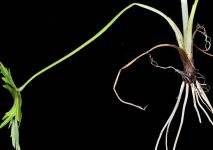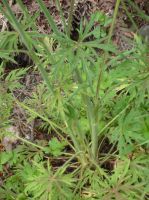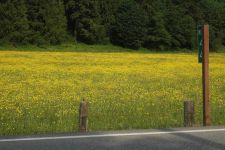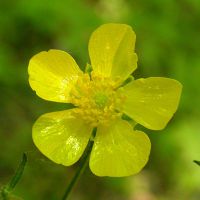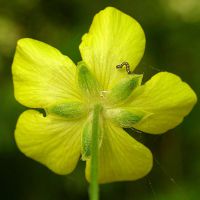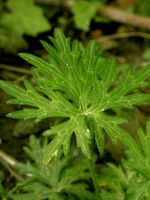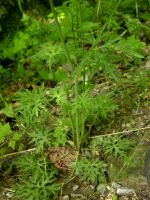Distribution: Occurring chiefly west of the Cascades crest in Washington; Alaska to California, east across the northern part of the U.S. and Canada to eastern North America.
Habitat: Moist to well-drained soil at low to middle elevations.
Flowers: May-August
Origin: Introduced from Europe
Growth Duration: Perennial
Conservation Status: Not of concern
Pollination: Bees, flies, butterflies, beetles
Perennial from slender, fibrous roots with stiff, spreading hairs throughout, the 1-several stems freely branched, hollow, erect, 3-8 dm. tall.
Basal leaves long-petiolate, the blades broadly cordate, 3-8 cm. long, deeply 3-lobed, again deeply lobed 2-3 times, the lobes incised into pointed segments; cauline leaves similar, alternate, transitional to the 3- to 5-lobed bracts.
Peduncles few-flowered, ascending; sepals 5, greenish, spreading, soft-hairy, 4-6 mm. long, early-deciduous, the tips sharply reflexed; petals 5, yellow, 10-14 mm. long and half as broad; nectary scale glabrous, obcordate, 1 mm. long, the lateral margins free 2/3 their length; receptacle ellipsoid, up to 3.5 mm. long; stamens 30-70; pistils 15-40.
Achenes obovate, 2.5 mm. long, glabrous, smooth, keeled, the stylar beak 0.6 mm. long.
Publication: Sp. Pl. 1: 554. 1753.
PNW Herbaria: Specimen records of Ranunculus acris in the Consortium of Pacific Northwest Herbaria database
WA Flora Checklist: Ranunculus acris checklist entry
OregonFlora: Ranunculus acris information
E-Flora BC: Ranunculus acris atlas page
CalPhotos: Ranunculus acris photos

